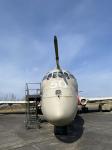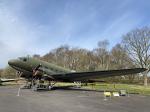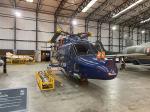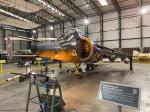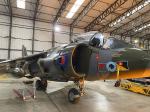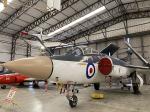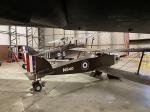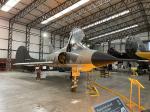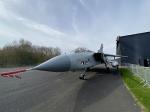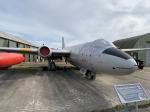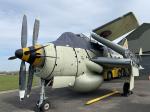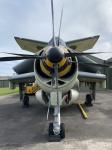Monday 11th April 2022
This April 2nd marked the 40th anniversary of Argentina invading the Falkland Islands and the resulting conflict in the Southern Atlantic. Although I wasn’t directly involved in the conflict, I was with the manufacturing of Harrier ground equipment in support of the Harrier aircraft which the British Task Force used during the conflict.
Most of the equipment we manufactured was sent down to the Southern Atlantic onboard the 15,000 tons ‘SS Atlantic Conveyor’, which was subsequently sank in the Southern Ocean on the evening of the 25th May 1982 by Exocet missiles aimed at HMS Hermes by incoming attacking Argentinian aircraft.
To mark the anniversary of the beginning of the invasion the Yorkshire Air Museum at Elvington, York, set up an exhibition of some of the aircraft and equipment used during that conflict and what it took to mount an aerial campaign 8000 miles from home, as it fought to reclaim the islands from the invading Argentine forces.
As I hadn’t visited the museum since before the Covid pandemic, this exhibition was a good enough excuse to revisit and acquaint myself with many familiar aircraft as well as look at other exhibits associated with the Falkland’s campaign.
There were displays examining the tactics used during the conflict, the lessons learned and after-effects of the British victory. There are examples of aircraft and weapons used, including the Harrier GR3, a Mirage IVA fighter, Falklands-veteran Lynx helicopter and the mighty Victor tanker.
Some of my best friends were deployed as serving officers during the Falklands conflict, and often recall the reassuring scream of the Harrier as it flew over them delivering armaments to strategic targets on the ground, an amazing aircraft with great versatility.
One of the aircraft I always make a beeline for when entering ‘T2 Hanger’ is the iconic Buccaneer aircraft. I spent much of my apprenticeship working on this aircraft and in particular the air intakes alongside fitters Fred Flynn and George Armstrong, two great role models and excellent fitters, lots of great memories, happy days. The Buccaneer on display was actually deployed to the Gulf war in 1991, its distinctive colour was in keeping with the Gulf war scheme at that time, including the ‘Flying Mermaid’ nose art.
As well as the Falklands display in T2 hanger, the huge Halifax bomber Mk111, still takes pride of place, towering over the smaller modern aircraft. Although this aircraft has been reconstructed from various aircraft, this heavy bomber saw significant service during the Second World War. Three Halifax squadrons were based at Elvington, 77 squadron, then 2 French squadrons 346 & 347. Over six thousand aircraft were manufactured and between them flew over 75,500 sorties during WW2.
Alongside the exhibition in T2 Hanger there is still lots to see around the site, I always like to walk around the restoration hanger, it reminds me of my time working at Home upon Spalding moor carrying out aircraft modifications to the Buccaneer and Phantom Aircraft and occasionally the Hunter. After leaving the restoration hanger and T2 hanger I headed over to have a look around the control tower, this is still very much as it would have been when the site was a fully operational bomber site. On leaving the control tower I popped into to have a look round the French officers mess as well as the Bomber Command, Air Gunners and Airships huts, all have fascinating and interesting memorabilia on display as well as information on what and how the site functioned during and after the war years.
Unfortunately the museums café was closed today due to staff shortages, so I headed back to the car and home.
The Falklands exhibition runs until the summer of 2022.
|


